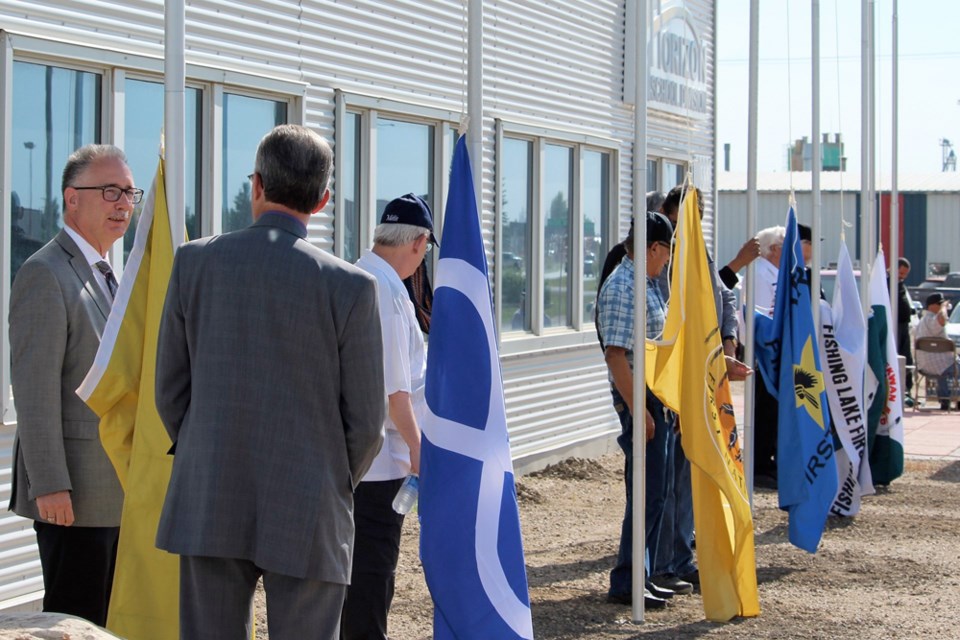Horizon School Division strives to be a safe and caring place for all staff and students, and the school division showcased those values once again with their Reconciliation Flag Raising at the Horizon division offices in Humboldt on June 21.
The flag raising saw the reconciliation flag raised along with seven other First Nation, Métis or Inuit communities, including the Federation of Sovereign Indigenous Nations (FSIN), the Métis Nation of Saskatchewan, Day Star First Nation, Fishing Lake First Nation, George Gordon First Nation, Muskowekwan First Nation, and Touchwood Agency Tribal Council.
“Horizon School Division is committed to furthering work on the Truth and Reconciliation Commission’s Calls to Action, and the vital reconciliation process of truth and healing,” the division noted in a press release.
The flag raising coincided with National Indigenous Peoples Day, which was observed nationwide.
“It’s recognizing our divisional partners but also recognizing First Nation, Métis and Inuit contributions to Canada as well as here in Saskatchewan,” noted Horizon School Division Coordinator of First Nation and Métis Education Services Lester Gardiner.
Having each of the seven communities present for the flag raising was an important part of the day, says Gardiner because it gave each of the communities a chance to share about themselves and their contributions.
“It’s so important that they are able to go ahead and share their contributions of their individual First Nations rather than looking at them in a silo effect where it’s just one First Nation… many of the things that were said talked about us as people. So we are moving forward rather than I or ours. It’s we are moving forward as a community.”
Gardiner notes while it is important to recognize the communities present in Horizon School Division, the flag raising also provided an opportunity to remember the history of those people.
“Looking at the murdered or missing women. We look at also the pipelines being built. We take a look at anything that looks at building those relationships to have those critical conversations so that we are able to learn from past mistakes and move forward together recognizing that we are having our treaty relationships.”
While the number of First Nation, Métis and Inuit communities in Horizon’s schools is evident, it is also reflected on the Horizon Board of Trustees, which Gardiner says is the highest First Nation representation in the area, and potentially the highest in the province, noting some northern divisions might have more.
Having the largest number in the area is just another reflection of the goals of Horizon School division, says Gardiner, which includes increasing literacy, having a safe and caring place to go to school and work, and improving assessment scores.
“By looking at those areas, I look at it as a path of healing because we all want to be safe in our communities, we all want to achieve success and how we can get that is through education and so with the direction of the school division, the board, as well as the director we can see that movement,” he noted.
“It’s not just going to happen overnight… it’s very important because the population of First Nation or indigenous people in schools is just rapidly on the rise so I think we’re ahead of the curve and I look forward to working with the school division for many years to help broaden people’s experiences.”




